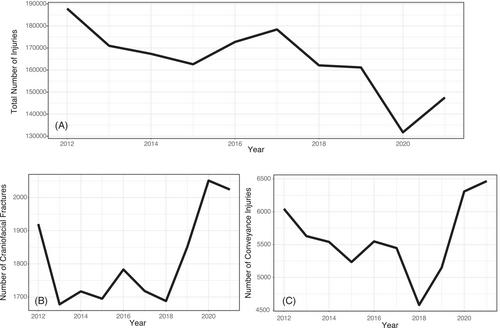Trauma remains the leading cause of death for children over a year old. Motorized recreational conveyances (RCs) adds another potential cause of pediatric trauma. This study aims to determine the impact of adding electric motors to RCs on the severity and frequency of pediatric injuries and craniofacial fractures.
Pediatric trauma information was obtained from the National Electronic Injury Surveillance System (NEISS) database between 2012 and 2021. Demographics, injury cause, diagnoses, and incident narrative were collected. Bivariate and multivariate regression analyses were used to determine injury factors associated with serious injuries.
One million five hundred ninety-six thousand five hundred fifty-nine encounters were examined; 113,905 (7.1%) were related to pediatric RCs and 5354 (5.4%) of those involved RCs with electric motors. 14.3% of injuries were related to scooters, 18.6% to skateboards, 54.2% to bicycles, and 12.9% to other RCs. There were significant differences in age, sex, race, helmet use, serious injuries, and craniofacial fractures between RC modalities. RC users were more likely to develop facial fractures (OR 2.12; 95%CI 2.01, 2.23; p < .001) and be involved in serious injuries (OR 1.42; 95%CI 1.38, 1.46; p < .001). Compared to their self-propelled counterparts, motorized scooters (OR 2.24; 95%CI 1.86, 2.69; p < .001) but not motorized skateboards (OR 1.01; 95%CI 0.88, 1.17; p = 0.88) were more likely to cause serious injuries. Helmet use was associated with fewer serious injuries (OR 0.5; 95%CI 0.46, 0.54; p < .001), facial fractures (OR 0.48; 95%CI 0.41, 0.55; p < .001), and skull fractures (OR 0.13; 95%CI 0.09, 0.17; p < .001).
The addition of electric motors to RCs significantly increases the risk of pediatric craniofacial fractures and serious injuries.
3.



